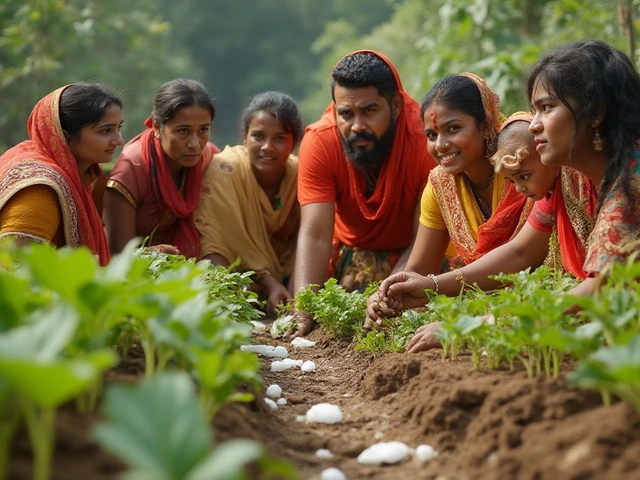Profitable Vegetable Farming in India: Practical Tips for Real Earnings
Ever wondered if a small vegetable plot can really pay off? Many Indian farmers are making good money by picking the right crops and using simple, smart practices. You don’t need a huge land area – a 500 sq m plot can bring a solid income if you plan it right.
Choosing the Right Crops for Profit
The first step is to match your crop choice with local demand and price trends. Leafy greens like spinach and fenugreek turn over fast and fetch good rates in local markets. Warm‑season vegetables such as okra, brinjal and chillies grow well in most Indian states and have steady demand year‑round.
High‑value crops like broccoli and cauliflower are becoming popular in metros. If you can access a reliable buyer, these can double your profit per kilogram compared to traditional crops. Check recent market prices on the e‑NAM or local mandis to see what’s moving.
Don’t forget regional specialty vegetables. In Maharashtra, cucumber and bitter gourd sell well; in Punjab, cabbage and carrot fetch premium prices. Picking a crop that your neighbors don’t grow reduces competition and helps you get better prices.
Boosting Yields with Smart Practices
Good soil preparation saves you money later. Add well‑rotted compost or farmyard manure to raise organic matter – this improves water holding capacity and reduces fertilizer need.
Drip irrigation is a game‑changer for small farms. Burying the lines a few inches deep protects them from UV damage and keeps water where roots are. You’ll use up to 40% less water and cut your electricity bill.
Timing matters. Start seeds 2‑3 weeks before the monsoon for rain‑fed crops, or use a starter nursery if you rely on irrigation. Transplant seedlings at the right age – too early and they wilt, too late and you lose market window.Keep pests in check with cheap, natural solutions. Neem oil spray, chilli‑garlic paste or trap crops can protect your produce without buying expensive chemicals. Healthy plants mean higher yields and better quality, which commands better prices.
Keep a simple cost sheet. Note down every expense – seeds, fertilizer, labor, water, transport. At harvest, compare total cost with selling price to know your exact profit per kilogram. This habit helps you decide which crop was truly worth it.
When it comes to selling, direct sales to local shops or school canteens often pay more than mandi rates. Joining a farmer‑producer organization can give you collective bargaining power and access to larger buyers.
Finally, experiment with a few new varieties each season. Mix a high‑yield, low‑cost crop with a premium one. This spreads risk and lets you test market response without risking the whole plot.
With the right crop choice, efficient irrigation, simple pest control and clear cost tracking, vegetable farming in India can become a reliable source of income. Start small, learn from each season, and watch your profit grow.

Which Vegetable Farming is Profitable in India? Your Practical Guide
Wondering which vegetable farming pays off in India? This article breaks down the most profitable vegetables, explains what makes them a smart choice, and shares tips from real farmers who’ve seen success. You’ll discover market trends, risks, and quick tricks to boost earnings. Whether you have one acre or ten, you’ll find ideas here to help you start, scale, or rethink your farming strategy. Get ready to turn your kitchen garden—or big farm—into a cash crop powerhouse.
About
Vegetable Gardening
Latest Posts


Which Flower Is Most Grown in India? The Top Cultivated Bloom and Why It Dominates
By Alden Thorne Oct 30, 2025

Grow Fresh Vegetables in Your Kitchen: A Complete Guide
By Alden Thorne Jan 1, 2025

Is Styrofoam Safe for Vegetable Gardens? The Truth About Using Polystyrene in Gardening
By Alden Thorne Jul 5, 2025
